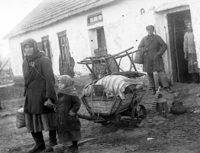In addition to population statistics, the project incorporates data on the ethnic composition and administrative division of Ukraine in the 1920s and 1930s, country's ecological zoning, as well as Soviet government policies and their results, including levels of collectivization of the agriculture, grain procurement plans, and data on the fulfillment of those plans. Mapping this data using Geographic Information System technology, the MAPA team produced an online atlas of web maps and analytical tools that provide researchers and the general public with resources to analyze various factors influencing famine outcomes. The interactive map allows one not only to conduct spatial analysis of historical data, but also helps to formulate new questions and to stimulate new research on the history of the Great Famine.
Using this data and the web map tools, the MAPA team conducted its own spatial analysis that confirmed the artificial, man-made nature of the famine. In particular, a comparison of the maps of the 1921–23 and 1932–33 famines revealed that the Great Ukrainian Famine had a different “footprint” than the famine one decade earlier. Whereas the famine of 1921-23 affected southern Ukraine, the Great Famine was concentrated in central Ukraine. Southern Ukraine, administratively divided in the early 1930s into the Odesa, Dnipropetrovsk, and Stalino (Donetsk) oblasts, had fertile black earth that led to its role as the “breadbasket” of Europe since mid-nineteenth century. In other words, wheat was a primary — and productive — industry in southern Ukraine. However, the region was also known for its occasionally harsh winters and, most of all, for the severe droughts that caused poor harvests, starvation, and sometimes famine. This is the area where more or less “natural” famines have taken place. But the Great Famine hit hardest in areas that did not see significant famines before.














